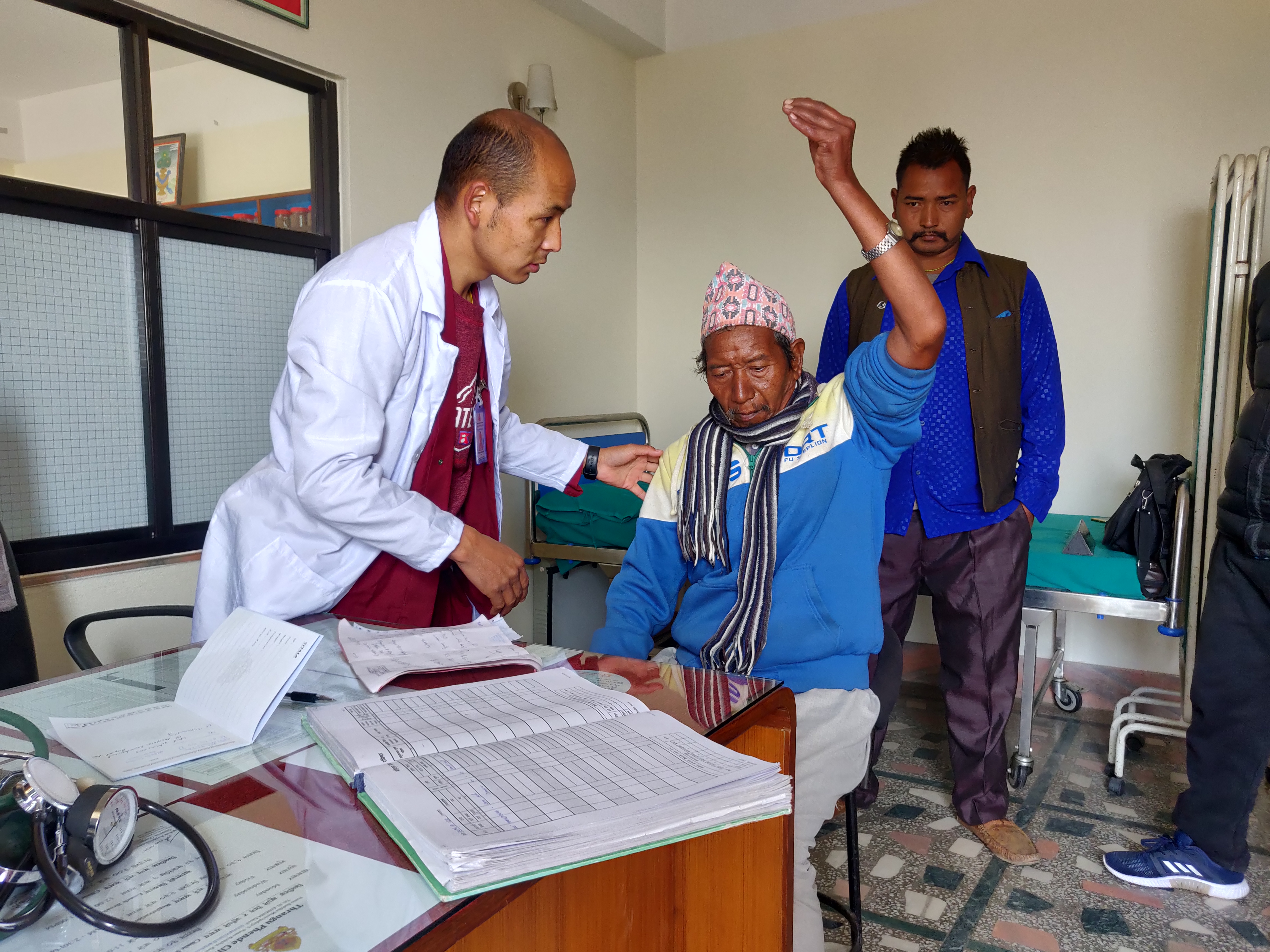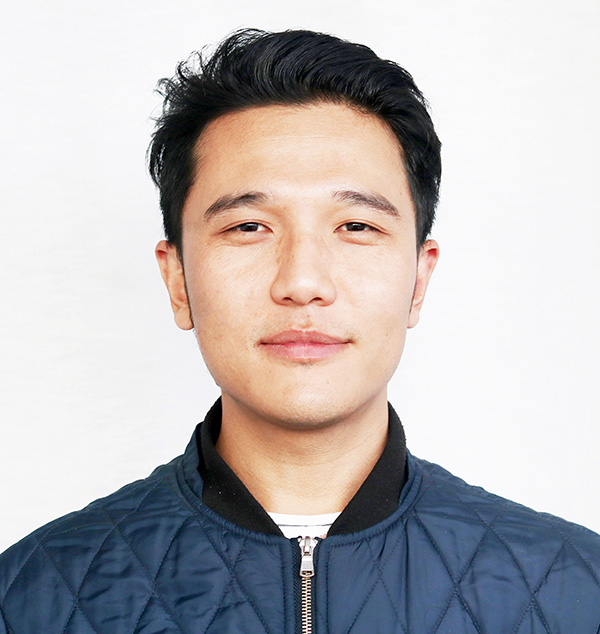Health
A monk on a mission
Wangchuk Rapten Lama is the director of a monastery-run clinic that provides healthcare for less than Rs 5, and he now has his mind set on building a hospital in his village..JPG&w=900&height=601)
Tsering Ngodup Lama
It’s a little after 8am, and Thrangu Phende Clinic’s director Wangchuk Rapten Lama is inspecting each and every room of the four-storey clinic. He is usually the first one to arrive and the last to leave the clinic, located on the premises of Thrangu Tashi Yangtse Monastery in Namo Buddha.
Around 9am, the first patients start arriving. There is 65-year-old Karma Lama, who has made a three-hour journey to Kavre from his village in Khadichaur, Sindhupalchok, just to get to the clinic. Sixty-year-old Siddha Bahadur Tamang has walked two hours, and 23-year-old Basanti Tamang took a 30-minute bus ride to get here. Then, there’s 70-year-old Pramita Magar, who came all the way from Rolpa. The patients at the clinic pay Rs 50 as a one-time registration fee and Rs 5 for further consultation. Everything else, from medicine, lab tests and acupuncture to dressing wounds, is done for free.
The clinic is run by the Thrangu Tashi Yangtse Monastery and is the brainchild of the monastery’s head abbot, Khenchen Thrangu Rinpoche. By 10am, the clinic is abuzz. In the acupuncture room, Karma, Tamang, and Magar are all lying face down on a bed and undergoing acupuncture. In the dressing room, an auxiliary nurse is cleaning burns running across Siddha’s right arm.
Ever since Lama, a certified health assistant, assumed the role of the clinic’s director in 2016, he has brought in a lot of changes. The first thing Lama did after
his appointment was legally register the clinic. “Since the clinic was started to
only take care of the monastery’s monks, it was never legally registered. I told the clinic’s board members that if we were to expand, it was crucial we get the proper legal documents to operate it,” says Lama. He then focused on getting the required manpower to run the clinic on a regular basis.
There’s now a doctor who visits every Monday, along with trained acupuncturists, a certified pharmacist, two health assistants (Lama being one), a pathologist and two doctors (both monks from the monastery) trained in Sowa Rigpa, traditional Tibetan medicine system. Lama also raised funds to set up the clinic’s pathology lab. An ECG machine and an ultrasound machine, if everything goes according to plan, will be installed in the clinic in a few weeks, he says. Lama is also planning to set up an ophthalmology and dental unit at the clinic. He has also raised funds through a friend living in Singapore to purchase an ambulance for the clinic.
“After weeks of running around at different government offices, I have finally managed to get all the documents needed to import and operate an ambulance. In two to three month’s time, the clinic will have one,” says Lama, who, despite being a health assistant, is called a doctor by the villagers living near the clinic.
Lama was born in a remote village of Chhekampar in Chumnubri Rural Municipality, Gorkha. He is the third oldest of his six siblings. When he was seven, he joined Thrangu Tashi Choeling Monastery, in Boudha.
The journey to Kathmandu from Chhekampar took Lama and his father eight days, and it was the first time he had ever left his village. At the time, Lama had no clue it would be the first of many journeys he would take within and outside Nepal.
Two years after joining the monastery, Lama joined Shree Mangal Dvip Boarding School, which is also run by the monastery. He was nine when he joined the school’s kindergarten.

“I became the first child in the family to ever go to school. When I started attending, I was much older than many of the children. But I never let that discourage me from studying. I always knew how fortunate I was to have the opportunity to go to school and get a modern education and also learn Buddhist scriptures,” says Lama.
It’s not uncommon for monks these days to attend modern schools and receive modern education while also learning Buddhist scriptures, philosophies and rituals at their monasteries. But what is uncommon is a monk with a degree in General Medicine, working as a health assistant.
“When I was 15, and was studying in grade 7, I was given the responsibility to look after the school’s clinic. I had already had several basic first-aid training sessions,” says Lama. As the clinic’s caretaker, Lama’s responsibilities included giving students first aid, keeping the clinic well-stocked with essential medicines, looking after the daily running of the clinic, and taking students with more serious illnesses to hospitals.
After graduating from the school, Lama was presented with two choices: continue managing the school’s clinic or study Buddhist rituals and philosophy. “I wanted to go with the latter because that was the reason I decided to become a monk. I dedicated a lot of my time to the clinic, which meant that I never really got enough time for my spiritual practice. But one of the senior monks convinced me to focus on health. He told me there were already many monks steeped in Buddhist philosophy and rituals,” says Lama. “He went on to say that ‘Teaching Buddhist philosophy and performing rituals aren’t the only way to benefit human beings. If you continue focusing on healthcare, I think you will be able to benefit equally.’”
Having lost his mother when he was only 13 to jaundice, a very curable disease, the senior monk’s words struck a chord with the young Lama. His family didn’t have funds to take her to Kathmandu for treatment. “It was after more than a month of her passing away that I learned about it. I was heartbroken. We Buddhists believe the prayers made for the deceased in the first seven weeks of someone’s passing away greatly help the soul make the journey to the next life. As a son, I never got to do that. That’s one of my biggest regrets in life,” he says.
That was why it didn’t take him much time to decide on what he wanted to do. “I decided to follow the monk’s advice, and promised myself that I was going to make this decision count. I also saw it as an opportunity to do what I couldn’t when my mother was unwell,” says Lama.
His request to study General Medicine was granted by the monastery, and in 2009, Lama joined Nepal Institute of Medical and Science Technology, Pingalasthan, Kathmandu. “It was quite a big deal because no monk of our monastery had ever attended college,” says Lama, with a wide smile on his face. “I was the only one in the class wearing a red robe while everybody else wore the college uniform. It was quite funny. When the college took us to different medical institutions for clinical exposure, patients would look at me with a surprised look. Well, I guess I made for an incongruous sight.”
When the college closed for long breaks, Lama used the time to organise health camps. “Rinpoche’s disciples from all over the world visited our monasteries in Nepal, and I started talking to some and pitching to them how I wanted to organise health camps. Many agreed to help me and that’s how I started organising health camps,” says Lama.
The first health camp he organised was in 2009, and since then, he says he has organised more than 50 across the country from Kathmandu, Gorkha, Bhaktapur, Sindhupalchok, Dhading and Surkhet to Kavre.
When the 2015 earthquake destroyed the only government-run health post in his home village of Chhekampar, Lama knew he had to do something. He started raising funds to build a new health post, and on July 19, 2016, Lama handed it over to the health ministry. In the health post’s waiting lounge is a plaque that dedicates the building to his late mother. Lama continues to contribute to the health post by sending medical supplies.
But his work didn’t stop there. In 2017, Lama raised enough funds to provide free cataract operations to 40 people from different villages in Kavre district. In 2018, Lama attended The Goalkeepers 2018 Global Goals Awards, hosted by the Bill and Melinda Gates Foundation in partnership with UNICEF, in New York City.
“When I read the email from the foundation, I thought somebody was playing a prank on me. I didn’t reply for a few days, and it was only after a friend said I should that I did,” says Lama, with a coy smile.
Niraj Chitrakar, who joined Mangal Dvip Boarding School as an accountant in 2005 and has known Lama for more than 15 years, says that he isn’t surprised about all that Lama has managed to do in his life. “Right from the days he managed the school’s clinic, it was clear to many of us that Lama was someone who was extremely hardworking and dedicated. All the things that he has managed to do at the Namo Buddha clinic makes me very proud,” says Chitrakar.
But Lama has already set his sights on his most ambitious project so far. He wants to establish a 15-bed community hospital in Chumnubri Rural Municipality, Gorkha. He wants the hospital to have a pathology laboratory, Sowa Rigpa and an acupuncture unit, birthing facility, and an X-ray machine.
Lama has already travelled to his village several times to research the project, the most recent being last month. Lama admits it’s going to be challenging.
“But I have the blessings of venerable Khenchen Thrangu Rinpoche, without whom I would have come nowhere close to where I am today,” says Lama. “I also have the blessings of my late mother, who, people tell me, was an extremely generous woman and always ready to help those in need. I know I will be able to see this project through.”




 6.12°C Kathmandu
6.12°C Kathmandu













%20(1).jpg&w=300&height=200)
